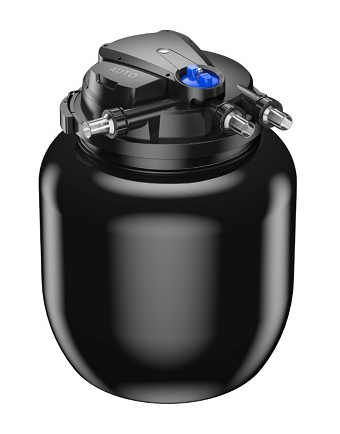Summer Pond Care
Pond care is incredibly important throughout the year and the benefits they provide are extensive. It’s no secret that different seasons pose different challenges for pond owners and aquatic enthusiasts the world over, as we have outlined in our condensed Seasonal Pond Maintenance Guide.

There are many problems you may come across in the summer months, largely due to temperature. Algae can bloom and cause green water; you may also experience Blanketweed or a host of other pond problems. Below, we have provided some helpful information and links which should help you look after your pond in the summer.
Have a suitable Pump and Filter System
A quality pump and filter set that has been chosen for the specific size and needs of your pond will help to prevent a multitude of pond problems. Most filters will have a UV bulb, foams, and biological media to provide a complete filtration of the pond; these are tuned specifically to the size of the pond and what kind of fish you have in it (ie. Goldfish or Koi). A suitable pump and filter can prevent problems like algae blooms, sludge build-up and poor water chemistry; it is vitally important that you don’t undersize your equipment.
In addition to the above, it is best to encourage bacterial colonisation in your pond filter. This can be done by properly aerating your pond or by using products like the Blagdon Pond Bio Start, PondXpert Gel Balls or Evolution Aqua Pond bombs. Bacteria can help to keep your pond clear, sludge at a minimum and improve the health of your pond as explained in our Bacteria blog.
.png)
The increase in sunlight also brings with it an increase in temperature. This is the common reason why most pond keepers will suffer from an algae bloom, i.e. the dreaded green water, blanketweed or duckweed. As soon as you see any signs of murky water, a green tinge, or hairlike strands, you will need to investigate and treat accordingly. In most cases, green water can be treated through the use of green water treatments, checking your UV bulb or installing an external UV clarifier. Blanketweed and Duckweed are normally cleared out manually and treated with a potent anti-Blanketweed or anti-Duckweed treatment.
Another common problem you may find is your pond turning cloudy, foamy, or brown. This is normally the result of a build-up of sludge or sediment but can be signs of other issues which you will need to be resolved quickly to maintain the health of your fish.
Our pond problems blogs have a lot of information on the various problems you may experience.
Plants
It’s important to check the condition of the plants in your pond. If you see any plants that are decaying or dying, these need to be removed quickly before they can affect the chemicals in your pond and build up sludge. As these can affect algae blooms, blanketweed development or duckweed proliferation.
Summer is a great time of the year to install more pond plants in the pond. Not only do they provide a great aesthetic to the pond, they also help to filter your pond water and provide oxygen. When fully grown, they can be used to provide shade to reduce the temperature of the pond (Lillies are fantastic at this) and your fish will lay their eggs around the plants during their reproduction. You may also find that plants save your fish, as the fish will hide among the plants when predators are visiting.
.png)
You will also need to monitor the levels of your pond. An increase in temperature will lead to some of your pond water evaporating and the oxygen levels decreasing. You may need to regularly top up the pond. You will need to dechlorinate the water (using the PondXpert Tap Tonic); or you can use rainwater, which is extremely beneficial for your pond. If you need to constantly top up your water, a Dechlorinator is a useful tool which can facilitate this.
.png)
You should also try to properly aerate your pond as a rule as aeration is important. It will improve water quality, which in turn can reduce algae development, improve fish health, and prevent mosquitos in your pond. There are many ways to aerate your pond, through plants, a waterfall, fountain, or a mechanical air pump. The pros and cons of these are explored in our Air Pumps guides.
In the warmer months, the amount of air in your pond will decrease; potentially to dangerous levels. A normal pond will require a minimum of 7ppm (parts per million) of dissolved oxygen in the pond; but at 30 degrees, your pond is likely to dip down to 5ppm of dissolved oxygen. This is extremely dangerous, as this will affect your fish and the bacteria in your pond. If you see any signs of your fish needing oxygen (they may be gasping at the surface, congregating around waterfalls or fountains, your pond may have a foul odour or rapid algae development) then you will need to find a way to improve the aeration.
You may also find the below blogs useful:
• June and July Pond Care
• August Pond Care
• Why is my Pond losing water?
• Why do chemicals in the Pond fluctuate?
If you have any queries, please email us on info@pondkeeper.co.uk.